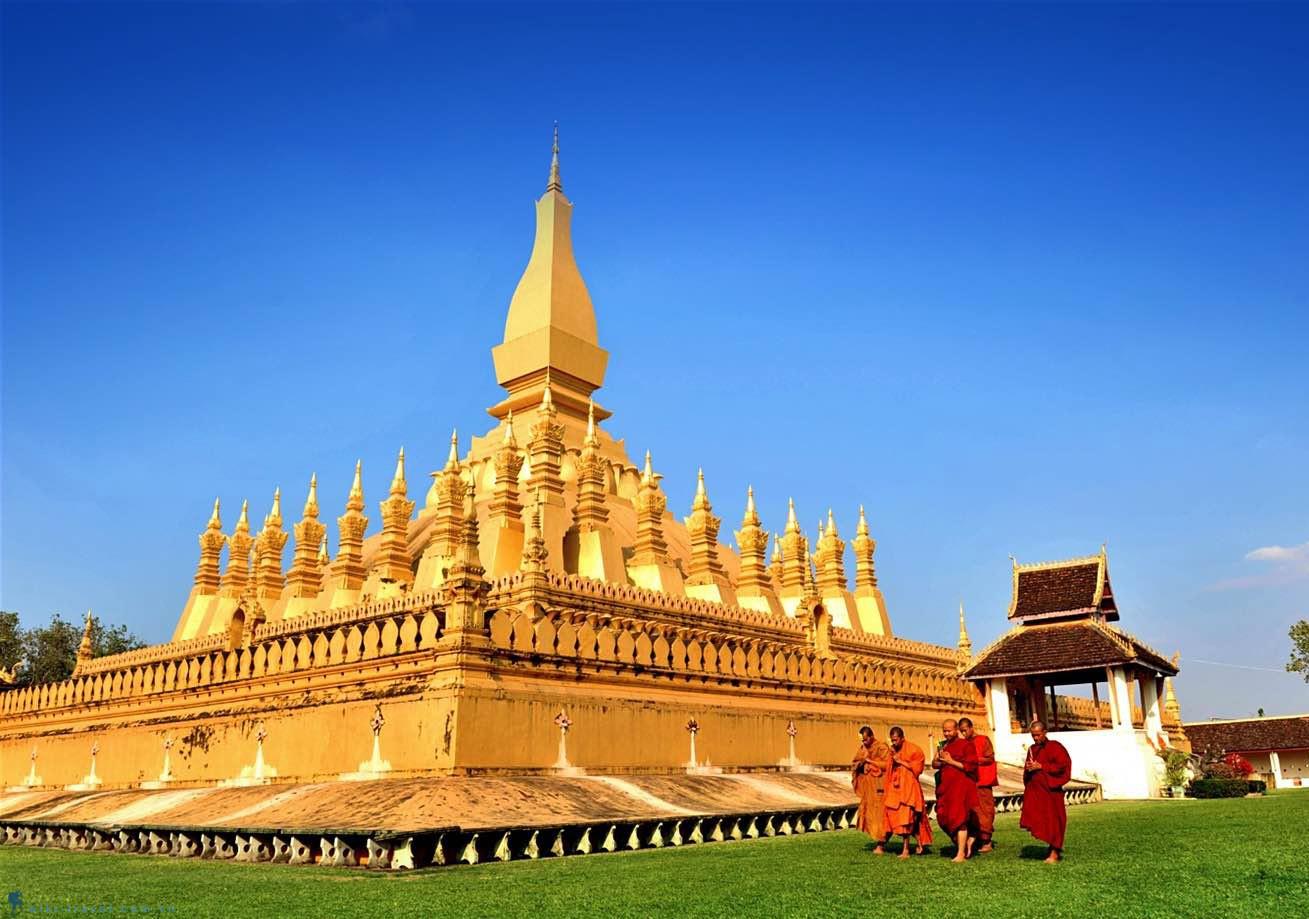LAOS
Simply Beautiful
Laos may be a landlocked country without a tropical coastline, but it makes up for it with stunning mountain scenery, lush rice paddies and the mighty Mekong River which runs through its territory. Still wild and largely untouched, it offers a fascinating array of cultural attractions, outdoor experiences and timeless charm.
Vivid nature, voluptuous landscapes and a vibrant culture collide with a painful past and optimistic future to make Laos an enigmatic experience for the adventurous.
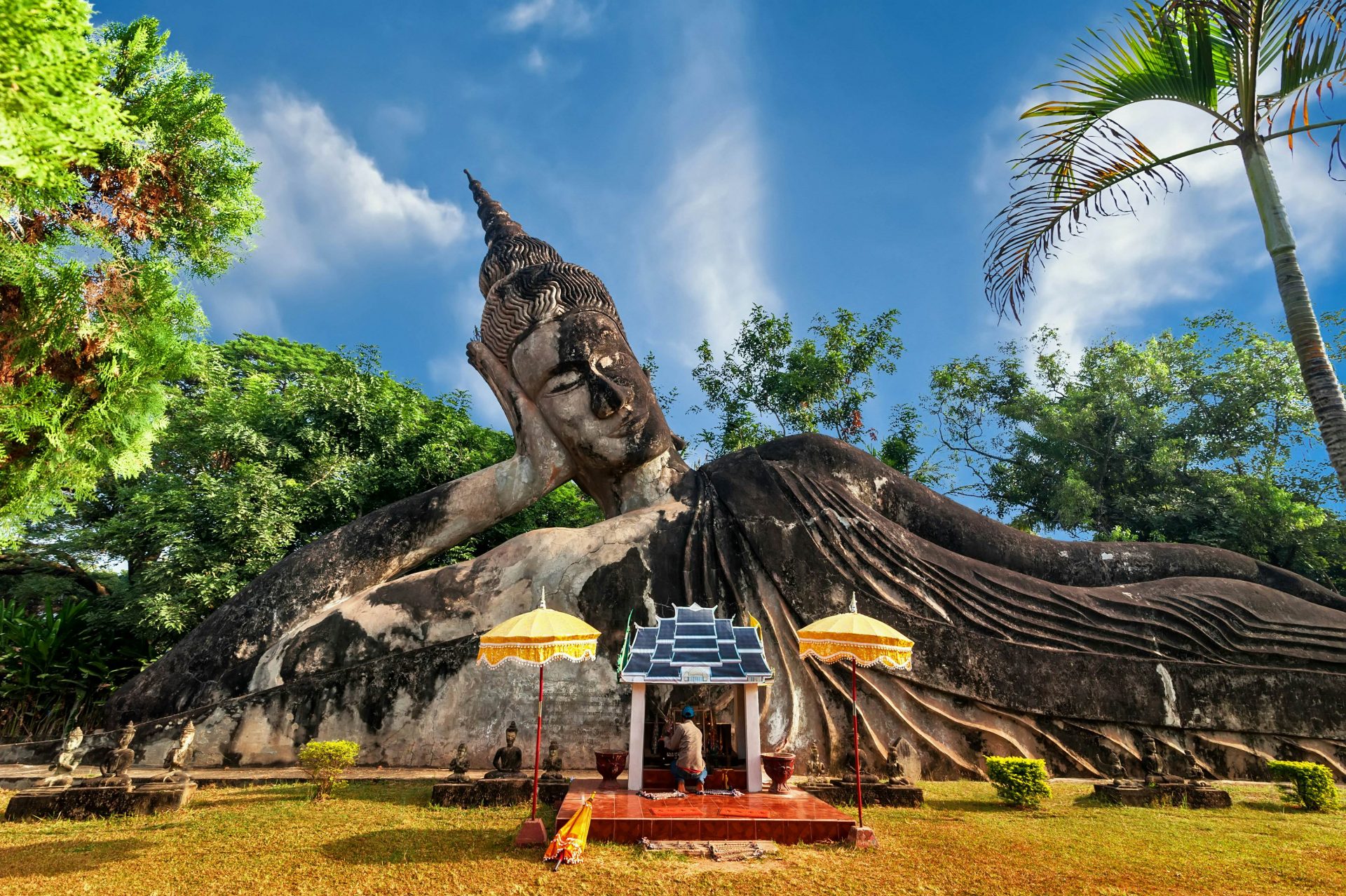
Top destinations
Top Activities

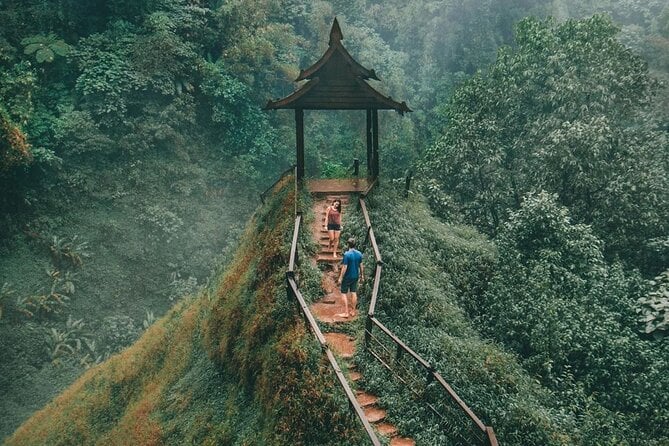




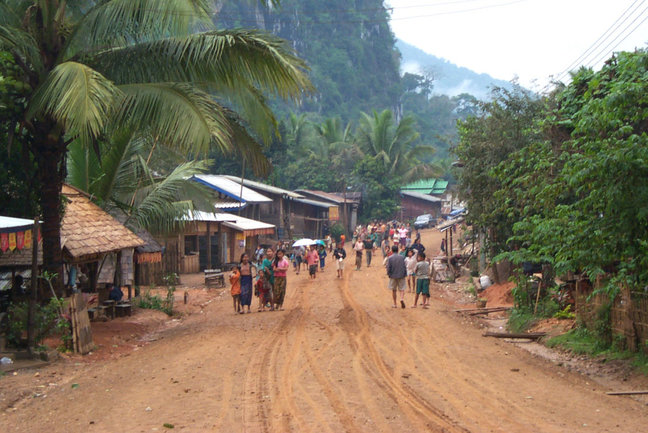
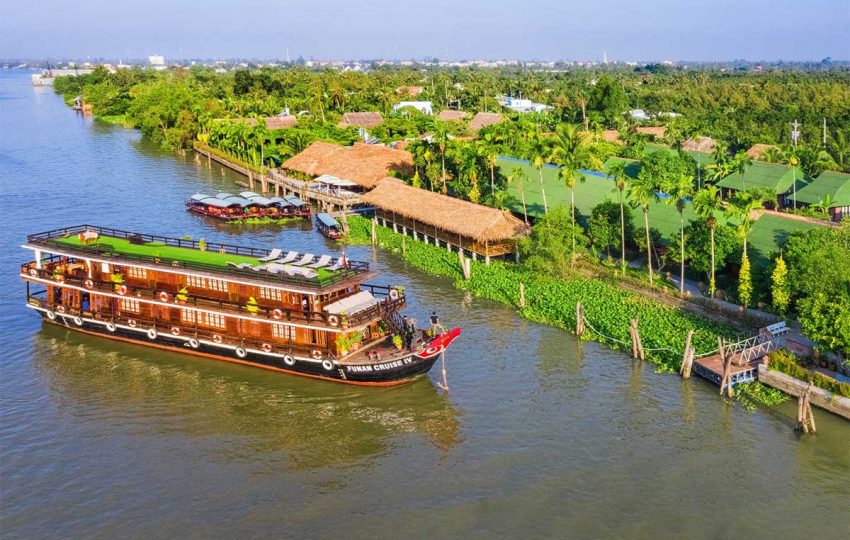
our unique tours
Laos Travel
Laos has two main seasons, ‘dry’ from November to early May, and ‘rainy’ from late May to October. The dry season is generally the most popular time to visit, however, during and just after the rainy season, Laos is at its most picturesque as the countryside is lush and green, and the waterfalls are at their most impressive.
If you travel between July and September, you should be prepared for heavy downpours almost every day.
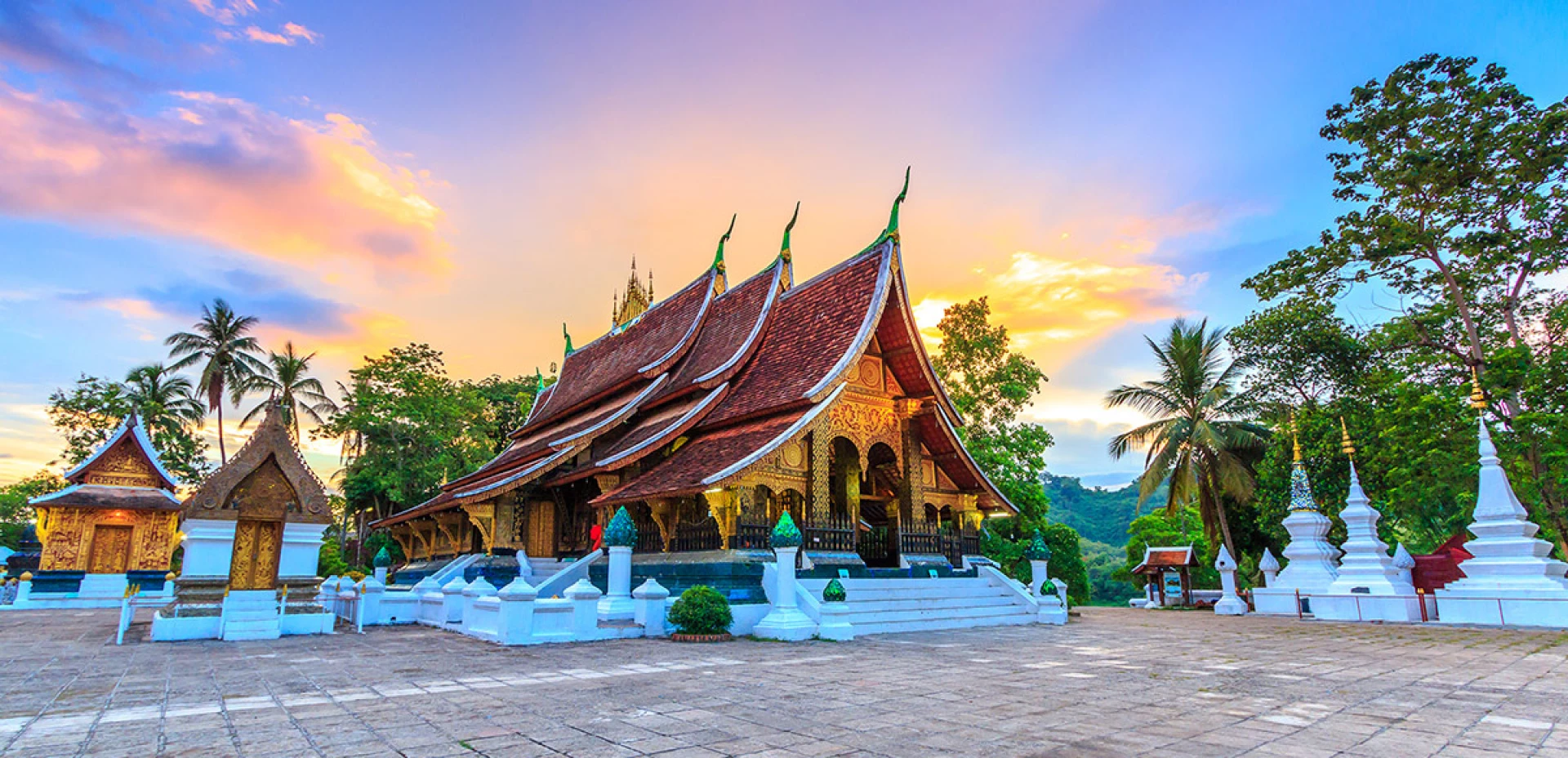
When to travel to Southern Laos (Vientiane)
The best time to visit Vientiane is from November to February, as you’ll experience sunny days and comfortable temperatures.
Then it starts to get hotter in March, April and May. You can expect temperatures between 30°C-38°C and high levels of humidity at the start of the wet season in May-June.
The rain continues until the end of October, and then you can expect drier and cooler weather.

When to travel to Northern Laos (Luang Prabang)
Luang Prabang experiences a tropical wet and dry climate. It is generally very warm throughout the year, although it is noticeably cooler during December and January.
The best time to visit Luang Prabang is during the dry season when the weather is dry and cool. March-April are the hottest months, and you might find that the heat, plus high levels of humidity, make sightseeing in the middle of the day somewhat challenging.
Late-May to October is the rainy season, however, the downpours only last for short periods, usually in the afternoon.
1. Visit Vang Vieng
Travelers “discovered” this little town in the late 1990s. It didn’t take long to develop into a crazy, hedonistic city. There’s still a party scene but now it’s focused on a handful of bars. It’s definitely not like the old days but I think that’s a good thing. Nowadays, things have calmed down and the center of Vang Vieng is thriving, with boutique hotels and high-end restaurants replacing some of the party-laden backpacker bars that used to pack the waterfront. The town has also become a hub for outdoor adventure, jungle hikes, and lazy days on the river. It’s worth spending a few days here.
2. Explore the 4,000 Islands
Located in Southern Laos, the 4,000 Islands (also known as ‘Si Phan Don’ in Lao) is an area of tiny, largely uninhabited islands in the Mekong River in Champasak Province near the Cambodian border. They are popular with backpackers and the vibe is laid-back and chill. Accommodation is only available on three of the islands: Don Khong, Don Kon, and Don Det. What’s available is cheap and you can spend a few days here reading in hammocks and slowly exploring by bike. Other than that, there’s really not much to do here besides chill in the river and relax at night. To reach the islands you need to take a boat from Pakse.
3. Relax in Luang Prabang
Luang Prabang is a slow-paced city. There is not much to do here other than enjoy epic sunsets over the Mekong River, wander the streets filled with colonial French architecture, spend time at the incredible Kuang Si Waterfalls, and shop at the bustling night market. You can also take a river tour, or explore some of the dozens of temples in town. Every morning at sunrise, the monks walk through the main streets receiving alms from the local residents. I went for two days but actually stayed for a week because I enjoyed it so much!
4. Trek to the Kuang Si Falls
This gorgeous waterfall near Luang Prabang is breathtaking. Turquoise waters flow over rock ledges into dramatic tiered limestone pools perfect for swimming. You can float about in some of these natural infinity pools or jump from trees into others. It’s a really cool place to visit. Admission is 20,000 LAK, and a shared tuk-tuk from Luang Prabang costs 30,000-40,000 LAK per person.
5. See the Plain of Jars
The UNESCO-recognized Plain of Jars has thousands of stone jars scattered around three different sites. Believed to be part of the burial practices from the Iron Age, this is one of the biggest and most important prehistoric sites in Southeast Asia. Legend has it that the jars were made by a race of giants to store alcohol. Take care not to stray too far from the cleared areas as there are still some landmines in the area. There are eight sites open for visiting: sites 1, 2, and 3 are all close to each other at Phonsavan so they are easy to visit together. Admission to Site 1 (with the best-preserved jars) is 15,000 LAK while entry to Sites 2 and 3 is 10,000 LAK.
Other Things to See and Do in Laos
1. Explore the Vieng Xai Cave City
Located close to Sam Nua (near the Vietnamese border), Vieng Xai Cave City served as living quarters for Laotian soldiers during the 1960s. You can see the living quarters as they were; the Kaysone Phomvihane Cave even has a working air-circulation pump. Guided tours are found at the Vieng Xai Caves Visitor Centre. Admission is 60,000 LAK and includes an audio tour. The bus there is 20,000 LAK while a tuk-tuk is 150,000 LAK.
2. Try the Gibbon Experience
This is one of the best activities in Laos. It’s a series of zip lines connecting the world’s highest treehouses in Bokeo Forest, where you can stay for one or two nights. You’re completely off the grid there, surrounded by gibbons, and it has some intense nature hikes. The three-day, two-night “Classic” package costs around 5,600,000 LAK per person.
3. See the Great Stupa (Pha That Luang)
The Great Stupa in Vientiane is a 45-meter (148-foot) gold-covered stupa (a dome-shaped Buddhist shrine). It’s considered the greatest monument in the country. Its exterior looks like a fortress with high walls, but the inside has numerous Buddhist, floral, and animal imagery throughout. You can admire the stupa from outside for free.
4. Head to Vientiane
The capital and largest city in Laos is full of important national monuments and temples, like the Great Stupa and the Sisaket Temple. While there, be sure to check out Buddha Park, a sculpture garden full of giant Buddha statues. It’s the most cosmopolitan city in the country, and there’s an up-and-coming foodie scene there as well. It’s worth spending a few days here exploring.
5. Visit the Elephant Conservation Center
Located in Sainyabuli, the ECC was launched in 2011 by a team of elephant specialists working towards protecting the elephant population in Laos. It’s the best way to see elephants in a responsible way that doesn’t harm them or involve exploitation. You can stay for one, two, or three nights and prices start at 3,800,000 LAK. A 7-day volunteering session costs around 8,500,000 LAK.
6. Take the slow boat on the Mekong
Drift down the Mekong River on a long, narrow boat with comfortable seating, home-cooked meals, and a unique view of the countryside. You can find a ride typically from the border at Huay-Xai that drops you off in Luang Prabang. Slow boats take two to three days. Prices vary depending on the quality of your tour company. There’s also a public boat that leaves daily at 11am.
7. Trek through Phou Hin Poun Conservation Area
Mountains, a limestone forest, rivers full of rapids, and caves await you in the protected Phou Hin Poun area of Laos. The entire area is filled with unique species of flora and fauna, including macaques, tigers, and gibbons. (Yes, tigers.) It’s a stunning area for guided treks, which usually last a couple of days. Your accommodation can help you book a guide on arrival.
8. Get outdoors in Nong Kiew (Muang Ngoi)
Life in this quaint village on the Nam Ou River is slow and peaceful, but Nong Kiew is a popular draw for outdoor lovers. The towering limestone cliffs are ideal for experienced climbers, and there are many hiking trails leading to nearby waterfalls and caves. To get there, take a bus from Luang Prabang to Pak Mong and then a tuk-tuk the rest of the way.
9. Chat with a monk
On the first Sunday of every month, monks gather at the Sangha College in Vientiane to chat with tourists. You’re able to ask them about their practice and daily life, and in return, they can practice their English. It’s a fun and eye-opening way to learn about the culture and the religion from someone whose daily life is much different than yours.
10. Visit the Buddha Caves
The Buddha Caves (Pak Ou Caves) hold over 6,000 Buddha statues that the locals still use for worship. There are standing Buddhas, sitting Buddhas, reclining Buddhas — you name it! To get there you take a scenic 25-kilometer (16-mile) boat trip up the Mekong River or you can take a songthaew (a truck converted into a shared taxi). From there, you’re able to explore the two main caves on foot. It’s about 20,000 LAK to enter the caves, and a shared boat costs 65,000 LAK round-trip (the boat takes two hours there and one hour to get back).
11. Take a Lao cooking class
Take a cooking class to learn how to make traditional dishes like laap (salad with minced meat and spices), orh (spicy stew), and mok pa (steamed fish in banana leaf). Most classes include a visit to the market and include several dishes, ending with everyone feasting on the food they have just cooked. Prices vary but expect to pay between 250,000-400,000 LAK for a class. If you’re in Vientiane, I recommend taking Madam Phasouk’s class. She’s an amazing cook and her private classes are 150,000 LAK, which includes making 3-4 dishes.
Getting around on Laos’s transport system is an adventure in itself, what with its barely seaworthy boats, aged jalopies with hard seats and hot, crowded buses. Don’t be fooled by maps and distance charts – seemingly short rides can take hours, as tired vehicles slow to a crawl in their uphill battle against muddy, mountainous roads. Take heart though, in knowing that many visitors have their best encounters with the people of Laos amid the adversity of a bad bus ride.
Laos’s road system has improved significantly over the last few years. Roads have been upgraded, and getting around is easier than ever, though often still challenging. Keep in mind, however, that a newly graded and paved road this year may get no maintenance, and after just two or even one rainy seasons the road will revert to being nothing but a potholed track. Some roads are only built to last a season, being washed away each year by the monsoon.
The country’s main thoroughfare is Route 13, which stretches from Luang Prabang to the Cambodian border, passing through Vientiane, Savannakhet and Pakse. Route 13 sees a steady flow of bus traffic, and it’s usually possible to flag down a vehicle during daylight hours provided it’s not already full. Off Route 13, you’ll encounter a wide range of road conditions – from freshly paved carriageways to bone-rattling, potholed tracks. With the improved road conditions, buses have largely supplanted river travel, the traditional means of getting around.
You only need to travel for a week or two in Laos before you realize that timetables are irrelevant: planes, buses and boats leave on a whim and estimated times of arrival are pointless. Wherever you go in Laos, the driver does not seem to be in any hurry to arrive.
To better prepare for your upcoming trip to Laos also read the Laos travel tips we’ve collected.
Inter-town transport
Visitors hoping to see rural Laos can expect hours of arduous, bone-crunching travel on the country’s motley fleet of lumbering jitter-boxes. Buses link only larger towns, and on many routes can be few and far between, a fact which makes a number of attractions, such as ruins and waterfalls, difficult to reach. Even when there is transport, you may find that the limited bus timetable will allow you to get to a particular site, but not make a same-day return trip – something of a problem given the dearth of accommodation in far-flung spots. In the rainy season, some unpaved roads dissolve into rivers of mud, slowing buses to a crawl or swallowing them whole. Even vehicles in reasonably good condition make painfully slow progress, as drivers combat mountainous roads and make frequent (and at times long) stops to pick up passengers, load goods and even haggle for bargains at roadside stalls.
Buses
Ordinary buses provide cheap transport between major towns and link provincial hubs with their surrounding districts. Cramped, overloaded and designed for the smaller Lao frame, these buses are profound tests of endurance and patience. Seats often have either torn cushions or are nothing more than a hard plank. Luggage – ranging from incontinent roosters to sloshing buckets of fish and the inevitable fifty-kilo sacks of rice – is piled in every conceivable space, filling up the aisle and soaring skywards from the roof. Breakdowns are commonplace and often require a lengthy roadside wait as the driver repairs the bus on a lonely stretch of road. Typical fares are of the order of 100,000K for Vientiane to Luang Prabang or Pakse, though fares could rise rapidly if fuel prices increase.
Operating out of Vientiane, a fleet of blue, government-owned buses caters mostly to the capital’s outlying districts, although it does provide a service to towns as far north as Vang Vieng and as far south as Pakse. While newer than most vehicles in Laos, these Japanese- and Korean-built buses are not air-conditioned and have cramped seats, a situation that worsens as rural passengers pile in. Buses plying remote routes tend to be in worse shape: aged jalopies cast off from Thailand or left behind by the Russians, which reach new lows in terms of discomfort and are even more prone to breakdowns. These vehicles range in style from buses in the classic sense of the word to souped-up tourist vans. Converted Russian flat-bed trucks, once the mainstay of travel in Laos, still operate in remote areas.
In most instances, tickets should be bought from the town’s bus station – it’s best to arrive with plenty of time in order to buy your ticket and grab a seat, especially in towns that are busy transport hubs, such as Oudomxai. In larger towns with an established tourist infrastructure, you’ll often be able to buy your tickets from a travel agent; this will usually be a little more expensive, but will include transport to the bus station. In more rural areas, you’ll pay for your ticket once on board.
At the other end of the spectrum you’ll find air-conditioned VIP buses, such as the daily $15 coach service from Vientiane to Luang Prabang. These services leave from their own private “stations”, and reservations, which can be made through guesthouses and travellers’ cafés, are recommended.
Additionally, you’ll find a number of van and minibus services in the more touristy towns, connecting to other popular tourist destinations, such as Vang Vieng and Si Phan Don. Prices for these services are higher than for the local bus alternative and the journey time will usually be a fair bit quicker, though you may find yourself just as crammed in as on a regular bus, and of course you miss out on the opportunity to meet local people. The situation changes rapidly at this end of the market, so check with travel agents for the latest information on routes and bookings. It’s also worth shopping around if booking minibus tickets – regardless of how much you pay for your ticket, and where you buy it, you’re likely to end up on the same minibus.
Reliable timetables only exist in regional hubs like Vientiane, Luang Prabang and Savannakhet; elsewhere it’s best to go to the bus station the night before you plan to travel to find out the schedule for the next day. Most departures are usually around 8 or 9am, and very few buses leave after midday. Many drivers will sit in the bus station long after their stated departure time, revving their engines in an attempt to lure enough passengers to make the trip worthwhile.
Sawngthaews
In rural areas, away from the Mekong Valley, the bus network is often replaced by sawngthaews – converted pick-up trucks – into which drivers stuff as many passengers as they possibly can. Passengers are crammed onto two facing benches in the back (“sawngthaew” means “two rows”); latecomers are left to dangle off the back, with their feet on a running board, an experience that, on a bumpy road, is akin to inland windsurfing.
Sawngthaews also ply routes between larger towns and their satellite villages, a service for which they charge roughly the same amount as buses. They usually depart from the regular bus station, but will only leave when a driver feels he has enough passengers to make the trip worth his while. Some drivers try to sweat extra kip out of passengers by delaying departure. Your fellow passengers may agree to this, but most often they grudgingly wait. In some situations, you can save yourself a lot of trouble and waiting by getting a few fellow travellers together and flat-out hiring the driver to take you where you want to go; the fares being so ridiculously low as to make this quite affordable. To catch a sawngthaew in between stops, simply flag it down from the side of the road and tell the driver where you’re headed so he knows when to let you off. The fare is usually paid when you get off. If the driver is working without a fare collector, he will tend to stop on the outskirts of his final destination to collect fares.
City and town transport
With even the capital too small to support a local bus system, transport within Lao towns and cities is left to squadrons of motorized samlaw (literally, “three wheels”) vehicles, more commonly known as jumbos and tuk-tuks. Painted in primary reds, blues and yellows, the two types of samlaw look alike and both function as shared taxis, with facing benches in the rear to accommodate four or five passengers. Jumbos are the original Lao vehicle, a home-made three-wheeler consisting of a two-wheeled carriage soldered to the front half of a motorcycle, a process best summed up by the name for the vehicle used in the southern town of Savannakhet – Skylab (pronounced “sakai-laeb”), after the doomed space station that fell to earth, piece by piece, in the late 1980s. Tuk-tuks, offspring of the three-wheeled taxis known for striking terror in Bangkok pedestrians, are really just bigger, sturdier jumbos, the unlikely product of some Thai factory, which take their name from their incessantly sputtering engines. Lao tend to refer to these vehicles interchangeably.
Although most northern towns are more than manageable on foot, the Mekong towns tend to sprawl, so you’ll find tuk-tuks particularly useful for getting from a bus station into the centre of town. To flag down a tuk-tuk, wave your hand, palm face down and parallel to the ground. Tell the driver where you’re going, bargain the price and pay at the end.
Tuk-tuks are also on hand for inner-city journeys. Payment is usually per person, according to the distance travelled and your bargaining skills. Rates vary from town to town and are prone to fluctuate in step with rising petrol prices, but figure on paying around 5000K per kilometre. In some towns, tuk-tuks run set routes to the surrounding villages and leave from a stand, usually near the market, once full. Chartering tuk-tuks is also a good way to get to sites within 10 to 15km of a city.
Boats
With the country possessing roughly 4600km of navigable waterways, including stretches of the Mekong, Nam Ou, Nam Ngum, Xe Kong and seven other arteries, it’s no surprise to learn that rivers are the ancient highways of mountainous Laos. Road improvements in recent years, however, have led to the decline of river travel between many towns, with buses and sawngthaews replacing the armada of boats that once plied regular routes.
The main Mekong route that remains links Houayxai to Luang Prabang. Since the upgrading of Route 13, boats very rarely ply the stretches of river between Luang Prabang, Pakse and Si Phan Don. Aside from the larger, so-called “slow boats” on the Mekong routes, smaller passenger boats still cruise up the wide Nam Ou River (Muang Khoua–Hat Sa), the Nam Tha (Luang Namtha to Pak Tha), and a few others, provided water levels are high enough.
Slow boats and passenger boats
The diesel-chugging cargo boats that lumber up and down the Mekong routes are known as “slow boats” (heua sa). Originally hammered together from ill-fitting pieces of wood, and powered by a jury-rigged engine that needs to be coaxed along by an on-board mechanic, these boats once offered one of Asia’s last great travel adventures, but you’ll need to speak Lao to arrange a trip. Much easier is to take advantage of the passenger boats with seating for a couple of dozen people, which have been introduced on the river journey most popular with Western visitors, namely Houayxai to Luang Prabang.
On smaller rivers, river travel is by long, narrow boats powered by a small outboard engine. Confusingly, these are also known as “slow boats”, although, unlike the big Mekong cargo boats, they only hold eight people and never attempt major Mekong routes. They never have a fixed schedule and only leave if and when there are enough passengers.
Due to the casual nature of river travel in Laos, the best way to deal with uncertain departures is to simply show up early in the morning and head down to the landing and ask around. Be prepared for contradictory answers to questions regarding price, departure and arrival time, and even destination. Given variations in currents and water levels and the possibility of breakdowns and lengthy stops to load passengers and cargo, no one really knows how long a trip will take. On occasion, boats don’t make their final destination during the daytime. If you’re counting on finding a guesthouse and a fruit shake at the end of the journey, such unannounced stopovers can take you out of your comfort zone, as passengers are forced to sleep in the nearest village or aboard the boat. It’s also a good idea to bring extra water and food just in case.
The northern Mekong and Nam Ou services (Houayxai–Pakbeng–Luang Prabang, and Luang Prabang–Nong Khia–Muang Ngoi–Muang Khoua–Hat Sa) are somewhat better managed, with tickets sold from a wooden booth or office near the landing (buy tickets on the day of departure). Fares are generally posted, but foreigners pay significantly more than locals. Always arrive early in the morning to get a seat. Southern Mekong services (Pakse–Champasak–Don Khong) have now all but stopped thanks to the improved state of Route 13, and most trips south now combine a bus journey along this road with a quick ferry ride across the water.
Travelling by river in Laos can be dangerous and reports of boats sinking are not uncommon. The Mekong has some particularly tricky stretches, with narrow channels threading through rapids and past churning whirlpools. The river can be particularly rough late in the rainy season, when the Mekong swells and uprooted trees and other debris are swept into the river.
Speedboats
On both the Mekong and its tributaries, speedboats (heua wai) are a faster but more expensive alternative to slow boats. Connecting towns along the Nam Ou and the Mekong from Vientiane to the Chinese border, these five-metre-long terrors are usually powered by a 1200cc Toyota car engine and can accommodate up to eight passengers.
Donning a crash helmet and being catapulted up the Mekong River at 50km an hour may not sound like most people’s idea of relaxed holiday travel, but if you’re up for it, speedboats can shave hours or days off a river journey and give you a thrilling spin at the same time. It’s by no means safe, of course, although captains swear by their navigational skills. The boats skim the surface of churning whirlpools and slalom through rapids sharp enough to turn the wooden hull into toothpicks.
Speedboats have their own landings in Vientiane, Thadua, Paklai, Luang Prabang, Pakbeng and Houayxai, and depart when full. Seating is incredibly cramped, so you may want to consider paying for the price of two seats. Crash helmets are handed out before journeys – to spare your hearing from the overpowering screech of the engine. Although the roar of the engine is less annoying on board than it is from the banks, consider bringing along ear plugs. For safety’s sake, insist on being given a life jacket to wear before paying.
Tickets cost as much as two to three times what you might pay to take a slow boat: the journey from Luang Prabang to Pakbeng, for example, is around $12. Speedboats can also be chartered for around $50 per hour – Luang Prabang to Phongsali, for example, costs around $200, Luang Prabang to Houayxai $100.
Cross-river ferries
Clunky metal car ferries and pirogues – dug-out wooden skiffs propelled by poles, paddles or tiny engines – are both useful means of fording rivers in the absence of a bridge. Both leave when they have a sufficient number of passengers and usually charge 3000–5000K, unless you’re taking a vehicle across, in which case you can expect to pay 7000–10,000K. If you don’t want to wait, pirogues are always open for hire. In the outback, fishermen can usually be persuaded to ferry you across to the opposite bank for a small sum.
Planes
The government-owned Lao Airlines (www.laoairlines.com), the country’s only domestic carrier, once had a dubious safety record. These days, however, standards are up and the airline is on a par with other regional carriers. Domestic routes have diversified in recent years, with destinations like Oudomxay and Luang Namtha now well connected with Vientiane.
You’ll need to remain flexible, though reliability increases on key routes: Vientiane–Luang Prabang, Vientiane–Pakse and Vientiane–Savannkhet. Given the popularity of such routes in the peak season it’s even wise to book ahead. On other routes, you may find it better to reconfirm the departure of your flight by stopping by the Lao Airlines office.
Sample one-way fares are Vientiane to Luang Prabang $82; Vientiane to Savannakhet $104; Vientiane to Oudomxay $140; Vientiane to Luang Namtha $150.
Vehicle and bike rental
Renting a private vehicle is expensive, but is sometimes the only way you’ll be able to get to certain spots. Self-drive is an option, and cars can be rented from a couple of agencies in Vientiane only. However, it’s usually easier and cheaper to hire a car and driver. Tour agencies will rent out air-conditioned vans and 4WD pick-up trucks as well as provide drivers. Prices are inflated by the rates paid by UN organizations, and can be as high as $80–100 per day, sometimes more if you’re hiring a car to head upcountry from Vientiane. When settling on a price, it’s important to clarify who is responsible for what: check who pays for the driver’s food and lodging, fuel and repairs, and be sure to ask what happens in case of a major breakdown or accident.
Motorbikes
One of the best ways to explore the countryside is to rent a motorbike. Unfortunately, this is only an option in tourist-friendly places like Vientiane, Vang Vieng, Luang Prabang, Thakhek and Pakse, and even then you’re often limited to smaller bikes, usually 100cc step-throughs such as the Honda Dream. Rental prices for the day are generally $8–10, depending on the age and condition of the bike. More powerful 125cc dirt bikes suitable for cross-country driving are available only in Vientiane and cost $20 a day.
A licence is not needed, but you’ll be asked to leave your passport as a deposit and may be required to return the bike by dark. Insurance is not available, so it’s a good idea to make sure your travel insurance covers you for any potential accidents.
Before zooming off, be sure to check the bike thoroughly for any scratches and damaged parts and take it for a test run to make sure the vehicle is running properly. As far as equipment goes, a helmet offers essential protection, although few rental places will have one to offer you; bear in mind it’s illegal to ride without a helmet. Sunglasses are essential in order to fend off the glare of the tropical sun and keep dust and bugs out of your eyes. Proper shoes, long trousers and a long-sleeved shirt are all worthwhile additions to your biking outfit and will provide a thin layer of protection if you take a spill.
Bicycles
Bicycles are available in most major tourist centres; guesthouses, souvenir shops and a few tourist-oriented restaurants may keep a small stable of Thai- or Chinese-made bikes (though rarely mountain bikes) to rent out for $1–2 per day.
Organized tours
Although less spontaneous and considerably more expensive than independent travel, organized tours are worth looking into if you have limited time or prefer to have someone smooth over the many logistical difficulties of travelling in Laos. Although the government encourages travellers to visit Laos through an authorized tour company, the tours aren’t bogged down in political rhetoric and guides tend to be easy-going and informative.
About a dozen tour companies have sprung up in Vientiane, all offering similar tours in roughly the same price range, although it never hurts to shop around and bargain. A typical multi-day package might include a private cruise down the Mekong River on a slow boat operated by the tour company, with guided day-tours around Luang Prabang and other towns. While some tours include accommodation, meals and entry fees, others don’t, so check what you’re getting before paying.
Organized adventure tours are rapidly gaining popularity in Laos. These can be single- or multi-day programmes and usually involve hill-tribe trekking or river kayaking, or a combination of both. Rafting tours are also available and organized rock climbing is just starting to take off. The main centres for adventure tours are Vientiane, Vang Vieng, Luang Prabang, Luang Namtha and Muang Sing.
All Laos’s tour companies are authorized by the Lao National Tourism Administration, which ensures that you won’t be dealing with a fly-by-night organization.
Guides are generally flexible about adjusting the itinerary, but if you want more freedom, an alternative is to set up your own custom-made tour by gathering a group of people and renting your own vehicle plus driver.
Addresses and street names
Lao addresses can be terribly confusing, firstly because property is usually numbered twice – when numbered at all – to show which lot it stands in, and then to signify where it is on that lot. To add to the confusion, some cities have several conflicting address systems – Vientiane, for example, has three, although no one seems to use any of them.
Only five cities in Laos actually have street names – and that’s just the start of the problem. Signs are few and far between and many roads have several entirely different names, sometimes changing name from block to block. If you ask for directions, locals most likely won’t know the name of a street with the exception of the three or four largest avenues in Vientiane. Use street names to find a hotel on a map in the Guide, but when asking directions or telling a tuk-tuk driver where to go you’ll have better luck mentioning a landmark, monastery or prominent hotel. Fortunately, Lao cities, even Vientiane, are relatively small, making it more of a challenge to get lost than it is to figure out where you’re going.
Laos is known for its laid-back and relaxed atmosphere, earning it the nickname “Land of a Million Elephants and the White Parasol”, and millions come to this country each year to experience it. This country also boasts stunning natural landscapes, including cascading waterfalls such as Kuang Si Falls near Luang Prabang and Tad Fane Waterfall in the Bolaven Plateau.
Laos is generally considered a safe destination for travellers, but like anywhere, there are a few things to keep in mind to ensure your trip is smooth sailing.
First off, be mindful of areas where unexploded ordnance from past conflicts may still pose a risk. It’s essential to respect these off-limits zones for your safety.
Now, onto a more common concern: theft. Unfortunately, tourists can be targets for thieves (who may include your fellow travellers). Keep an eye on your belongings and take precautions, especially in crowded areas. Vang Vieng, in particular, has a reputation for petty crime, so stay vigilant if you find yourself there.
Another crucial point to note is Laos’ stringent drug laws. Possession of even small amounts of drugs, including marijuana, can result in particularly severe penalties.
When visiting temples and religious sites, be sure to dress appropriately. You’ll want to keep shoulders and knees covered out of respect for the sacredness of these places.
Regarding LGBTQ+ travellers, Laos is generally welcoming. However, it’s essential to be mindful of local attitudes. Open displays of affection, whether same-sex or opposite-sex, are uncommon and considered rude.
Laos is a conservative culture, and attitudes towards homosexuality are complicated. You’re unlikely to find any nightlife scene here. That said, most LGBTQ+ travellers, including gender non-conforming travellers, tend to find Laos a safe place to visit. Respect for local norms and customs is key to a safe and enjoyable visit to Laos.
For travellers from the EU, the best way to reach Laos is by flying to Bangkok, Thailand, and then catching a connecting flight to either Vientiane or Luang Prabang. The flight duration from London to Bangkok is approximately 11 hours, followed by a shorter flight to Laos lasting around 1-2 hours, depending on the destination within Laos.
How to get to Laos from the US & Canada
From the US and Canada, the most convenient route to Laos is often via major Asian hubs like Bangkok, Seoul, or Hong Kong. Flights from North America to Bangkok typically take around 20-24 hours with layovers, followed by a shorter flight to Laos, adding approximately 1-2 more hours to the journey depending on the specific route and layover times. Planning for layovers and potential time differences is essential for a smoother travel experience.
When it comes to getting around Laos, you’ve got plenty of options to choose from. In cities like Vientiane and Luang Prabang, tuk-tuks are practically on every corner, offering a quick and easy way to zip around town. If you’re feeling adventurous, renting a motorbike or scooter gives you the freedom to explore at your own pace—just make sure you’ve got the right license and always put safety first.
For hassle-free city travel, apps like Grab are helpful, summoning rides with just a tap on your phone. If you’re only going a short distance within town, keep an eye out for songthaews—those shared pickup trucks turned communal taxis.
For a smoother journey, guided tours offer all-inclusive packages covering transportation, accommodation, and activities. Alternatively, public buses connect major cities at a budget-friendly price, though they may not offer the most comfortable ride.
Laos is renowned for its affordability compared to its neighbouring countries in Southeast Asia. When it comes to daily expenses, your main outlay will likely be on transportation, while accommodation and food remain pleasantly inexpensive.
By eating at noodle stalls and cheap restaurants, opting for basic accommodation and travelling by public transport, you can travel in Laos on a daily budget of less than $37 USD.
Staying in more upmarket hotels and resorts, and eating in the best restaurants will push your budget up to a very reasonable $50–90 USD) a day. Note, however, that prices are significantly higher in Vientiane and Luang Prabang.
While restaurants and some shops have fixed prices, in general merchandise almost never has price tags, and the lack of a fixed pricing scheme can take some getting used to. Prices, unless marked or for food in a market, are usually to be negotiated.
For those seeking the pinnacle of luxury, Laos can set you back anywhere from $300–1000 USD per day, depending on your preferences.
The ideal amount of days you’ll want to spend in Laos will depend on your budget, and whether Laos is the only destination you’ll be travelling to (versus being a additional leg to a larger trip in Southeast Asia).
Most find 7 to 10 days a good amount of time to see the main highlights: like Luang Prabang, Vientiane, and the picturesque countryside, without feeling rushed.
That said, if you’re keen to dive deeper, really soak in the culture, and take things at a leisurely pace, stretching your stay to two weeks might be more up your alley. This way, you can truly experience Laos’ charm and explore its hidden gems without watching the clock too closely.
Yes, typically most visitors to Laos will require a visa.
If you’re from the United States, Canada, the United Kingdom, Australia, most European Union countries, or many others, you’re in luck. You can snag a visa on arrival. Just make sure your passport is valid, bring a passport-sized photo, and have some cash (usually in USD) handy for the visa fee. This visa on arrival usually gives you a solid 30 days to explore Laos and you can get it at major airports like Vientiane’s Wattay International Airport, Luang Prabang’s, and Paske.
Laos also offers an e-visa system for folks from specific countries. This means you can sort out your visa online, no embassy visits are required. Just upload a passport-sized photo and pay the fee online.
If you prefer the traditional route, you can still apply for a visa at a Lao embassy or consulate before your trip begins.
For anyone with limited mobility, Laos can be a difficult country to explore. Even in the big tourist cities of Luang Prabang and Vientiane, you’ll be met with uneven pavements, which lack ramps, and small sets of stairs leading into most restaurants and guesthouses. In smaller towns the situation is even worse – there are often no pavements and most of the roads are dirt tracks.
That said, it is still possible to have a great trip. Public transportation in Laos may not be entirely wheelchair-friendly, but private transportation options like taxis or hired cars can be arranged.
Attractions like the Kuang Si Falls near Luang Prabang or the Pak Ou Caves may require navigating stairs or rough terrain. However, some sites, like the temples in Luang Prabang, may have wheelchair ramps or other accommodations.
When preparing for your trip, it’s a good idea to pack spares of any clothing or equipment that might be hard to find. If you use a wheelchair, you should have it serviced before you go and carry a repair kit.
You’ll want to avoid directly drinking the tap water or river water in Laos. Safe bottled water is available almost anywhere, though when buying, check that the seal is unbroken as bottles are occasionally refilled from the tap. For this reason, you’ll first and foremost want to pack a re-fillable filter water bottle or water purifying tablets.
Tampons are not common in Laos, so it’s wise to bring supplies from home if you need them.
Lightweight and breathable clothing is essential, such as cotton and linen shirts, shorts, and dresses. You’ll also want to prepare for rain with quick-dry shorts and a rain jacket.
If you plan on visiting temples, be sure to pack modest clothing: lightweight long-sleeve shirts and pants or skirts that cover the knees.
Finally, you’ll want to bring a good backpack. Look for something durable and comfortable with ample storage space, and padded straps, ideally from trusted brands like Osprey or The North Face.
Travelling through Laos with children can be both challenging and fun, but the rewards far outweigh any negatives. The Lao people are very family-focused, but long, bumpy journeys can make things a struggle at times.
In tourist areas it should be no problem finding food that kids will eat, and dishes like spring rolls, fried rice and fõe, where chilli is added by the diner, are a good choice for those who may not be used to the spiciness of Lao cuisine.
A major consideration will be the long journeys that are sometimes necessary when travelling around the country – these can be bone-numbing at the best of times, and young children may find them excruciatingly boring. That said, bus journeys are a real “local” experience that can make more of an impression than wandering around temples. It is easy, however, to see a fair amount of the country by sticking to journeys of less than six hours.
Most hotels and guesthouses are very accommodating to families, often allowing children to stay for free in their parents’ room, or adding an extra bed or cot to the room for a small charge.
Fiery and fragrant, with a touch of sour, Lao food owes its distinctive taste to fermented fish sauce, lemongrass, coriander leaves, chillies and lime juice. Eaten with the hands along with the staple, sticky rice, much of Lao cuisine is roasted over an open fire and served with fresh herbs and vegetables. Pork, chicken, duck and water buffalo all end up in the kitchen, but freshwater fish is the main source of protein in the Lao diet. Many in rural Laos, especially in the more remote mountainous regions, prefer animals of a wilder sort – mouse deer, wild pigs, rats, birds or whatever else can be caught. Though you may not encounter them on menus, you’re likely to see them being sold by the side of the road when travelling in these parts.
Closely related to Thai cuisine, Lao food is, in fact, more widely consumed than you might think: in addition to the more than two million ethnic Lao in Laos, Lao cuisine is the daily sustenance for roughly a third of the Thai population, while more than a few Lao dishes are commonplace on the menus of Thai restaurants in the West. Although Lao cuisine isn’t strongly influenced by that of its other neighbours, Chinese and Vietnamese immigrants have made their mark on the culinary landscape by opening restaurants and noodle stalls throughout the country, while the French introduced bread, pâté and pastries.
Vientiane and Luang Prabang are the country’s culinary centres, boasting excellent Lao food and international cuisine. Towns with a well-developed tourist infrastructure will usually have a number of restaurants serving a mix of Lao, Thai, Chinese and Western dishes, usually of varying standards, but once you’re off the well-beaten tourist trail it can be hard to find much variety beyond fried rice and noodle soup.
Food is generally very inexpensive in Laos, with the cheapest options those sold by hawkers – usually fruit, small dishes like papaya salad, and grilled skewered meat – and the most expensive being the upmarket tourist restaurants (usually French or European) in Luang Prabang and Vientiane.
Though hygiene standards have improved over recent years, basic food preparation knowledge in many places still lacks behind other countries in the region. However, though a little caution is a good idea, especially when you first arrive in the country in order to allow your stomach time to adjust to the change of cuisine, it’s best just to exercise common sense. Generally, noodle stalls and restaurants that do a brisk business are a safe bet, though you may find that this denies you the opportunity to seek out more interesting, less touristy food.
Markets, street stalls and noodle shops
Morning markets (talat sâo), found in most towns throughout Laos, remain open all day despite their name and provide a focal point for noodle shops, coffee vendors and fruit stands. In Luang Prabang, Vientiane and Luang Namtha, vendors hawking pre-made dishes gather towards late afternoon in evening markets known as talat láeng. Takeaways include grilled chicken (pîng kai), spicy papaya salad (tam màk hung) and in some instances a variety of dishes, displayed in trays and ranging from minced pork salad (larp mu) to stir-fried vegetables (khùa phák).
Most market vendors offer only takeaway food, with the exception of noodle stalls, where there will always be a small table or bench on which to sit, season and eat your noodle soups. Outside of the markets, noodle shops (hân khãi fõe) feature a makeshift kitchen surrounded by a handful of tables and stools, inhabiting a permanent patch of pavement or even an open-air shophouse. Most stalls specialize in one general food type, or, in some cases, only one dish; for example a stall with a mortar and pestle, unripe papayas and plastic bags full of pork rinds will only offer spicy papaya salad and variants on that theme. Similarly, a noodle shop will generally only prepare noodles with or without broth – they won’t have meat or fish dishes that are usually eaten with rice.
Restaurants
Proper restaurants (hân ahãn) aren’t far ahead of noodle shops in terms of comfort; most are open-sided establishments tucked beneath a corrugated tin roof. Ethnic Vietnamese and Chinese dominate the restaurant scene in some parts of Laos; indeed it can be downright difficult to find a Lao restaurant in some northern towns. Most towns that have even the most basic of tourist infrastructure will have at least one restaurant with an English-language menu – even if the translation can lead to some amusement. Away from the larger tourist centres, dishes will usually encompass variations on fried rice and noodle dishes, often with a few Lao, Chinese or Thai options intended to be eaten with sticky or steamed rice.
Tourist restaurants in larger centres usually offer a hotchpotch of cuisine – often encompassing standard Lao dishes like larp and mók pa alongside sandwiches, pastas and steaks. The most upmarket restaurants in Vientiane and Luang Prabang generally serve French cuisine, often in very sophisticated, un-Lao surroundings, but at very reasonable prices – a meal for two, including wine, is unlikely to stretch past $40.
When it comes to paying, the normal sign language will be readily understood in most restaurants, or simply say “khãw sék dae” (“the bill, please”). You’ll generally only be able to use credit cards at upscale establishments in Vientiane and Luang Prabang. Tipping is only expected in the most upmarket restaurants – ten percent should suffice.
So that a variety of tastes can be enjoyed during the course of a meal, Lao meals are eaten communally, with each dish being served at once, rather than in courses. The dishes – typically a fish or meat dish and soup, with a plate of fresh vegetables such as string beans, lettuce, basil and mint served on the side – are placed in the centre of the table, and each person helps him- or herself to only a little at a time. When ordering a meal, if there are two of you it’s common to order two or three dishes, plus your own individual servings of rice, while three diners would order three or four different dishes.
The staple of Lao meals is rice, with noodles a common choice for breakfast or as a snack. Most meals are enjoyed with sticky rice (khào niaw), which is served in a lidded wicker basket (típ khào) and eaten with the hands. Although it can be tricky at first, it’s fairly easy to pick up the proper technique if you watch the Lao around you. Grab a small chunk of rice from the basket, press it into a firm wad with your fingers and then dip the rice ball into one of the dishes. Replace the lid of the típ khào when you are finished eating or you will be offered more rice.
Plain steamed white rice (khào jâo) is eaten with a fork and spoon – the spoon and not the fork is used to deliver the food to your mouth. If you’re eating a meal with steamed white rice, it’s polite to only put a small helping of each dish onto your rice at a time. Chopsticks (mâi thu) are reserved for noodles, the main exception being Chinese-style rice served in bowls.
If you are dining with a Lao family as a guest, wait until you are invited to eat by your host before taking your first mouthful. While dipping a wad of sticky rice into the main dish, try not to let grains of rice fall into it, and dip with your right hand only. Resist the temptation to continue eating after the others at the table have finished. Custom dictates that a little food should be left on your plate at the end of the meal.
Flavours
In addition to chillies, coriander, lemongrass and lime juice, common ingredients in Lao food include ginger, coconut milk, galangal, shallots and tamarind. Another vital addition to a number of Lao dishes is khào khùa, raw rice roasted in a wok until thoroughly browned and then pounded into powder; it’s used to add both a nutty flavour and an agreeably gritty texture to food.
The definitive accent, however, comes from the fermented fish mixtures that are used to salt Lao food. An ingredient in nearly every recipe, nâm pa, or fish sauce, is made by steeping large quantities of fish in salt in earthen containers for several months and then straining the resulting liquid, which is golden brown. Good fish sauce, it has been said, should attain the warm, salty smell of the air along a beach on a sunny day. Most Lao use nâm pa imported from Thailand.
While nâm pa is found in cooking across Southeast Asia, a related concoction, pa dàek, is specific to Laos and northeastern Thailand. Unlike the bottled and imported nâm pa, thicker pa dàek retains a home-made feel, much thicker than fish sauce, with chunks of fermented fish as well as rice husks, and possessing a scent that the uninitiated usually find foul. However, as pa dàek is added to cooked food, it’s unlikely that you’ll really notice it in your food, and its saltiness is one of the pleasurable qualities of the cuisine.
Use of monosodium glutamate (MSG) is also common. The seasoning, which resembles salt in appearance, sometimes appears on tables in noodle shops alongside various other seasonings – it’s generally coarser and shinier than salt.
Standard dishes
If Laos were to nominate a national dish, a strong contender would be larp, a “salad” of minced meat or fish mixed with garlic, chillies, shallots, galangal, ground sticky rice and fish sauce. Traditionally, larp is eaten raw (díp), though you’re more likely to encounter it súk (cooked), and is often served with lettuce, which is good for cooling off your mouth after swallowing a chilli. The notion of a “meat salad” is a common concept in Lao food, although in Luang Prabang you’ll find Lao salads closer to the Western salad, with many falling into the broad category of yam, or “mixture”, such as yam sìn ngúa, a spicy beef salad.
Another quintessentially Lao dish is tam màk hung, a spicy papaya salad made with shredded green papaya, garlic, chillies, lime juice, pa dàek and, sometimes, dried shrimp and crab juice. One of the most common street-vendor foods, tam màk hung, is known as tam sòm in Vientiane; stalls producing this treat are identifiable by the vendor pounding away with a mortar and pestle. Each vendor will have their own particular recipe, but it’s also completely acceptable to pick out which ingredients – and how many chillies – you’d like when you order. One of several variants on tam màk hung is tam kûay tani, which replaces shredded papaya with green banana and eggplant.
Usually not far away from any tam màk hung vendor, you’ll find someone selling pîng kai, basted grilled chicken. Fish, pîng pa is another grilled favourite, with whole fish skewered, stuffed with herbs and lemongrass, and thrown on the barbecue.
Soup is a common component of Lao meals and is served along with the other main courses during a meal. Fish soups, kaeng pa (or tôm yám paw when lemongrass and mushrooms are included), frequently appear on menus, as does kaeng jèut, a clear, mild soup with vegetables and pork, which can also be ordered with bean curd (kaeng jèut tâo hû).
A speciality of southern Laos and Luang Prabang, well worth ordering if you can find it, is mók pa or fish steamed in banana leaves. Other variations, including mók kheuang nai kai (chicken giblets grilled in banana leaves) and mók pa fa lai (with freshwater stingray), are also worth sampling, though they appear less frequently on restaurant menus.
Restaurants catering to travellers can whip up a variety of stir-fried dishes, which tend to be a mix of Thai, Lao and Chinese food, and are usually eaten with steamed rice. Fried rice is a reliable standby throughout the country, as are Chinese and Thai dishes such as pork with basil over rice (mũ phát bai holapha), chicken with ginger (khùa khing kai) and mixed vegetables (khùa phák).
Noodles
When the Lao aren’t filling up on glutinous rice, they’re busy eating fõe, the ubiquitous noodle soup that takes its name from the Vietnamese soup pho. Although primarily eaten in the morning for breakfast, fõe can be enjoyed at any time of day, and in more remote towns you may find that it’s your only option.
The basic bowl of fõe consists of a light broth to which is added thin rice noodles and slices of meat (usually beef, water buffalo or grilled chicken). It’s served with a plate of fresh raw leaves and herbs, usually including lettuce, mint and coriander. Flavouring the broth is pretty much up to you: containers of chilli, sugar, vinegar and fish sauce (and sometimes lime wedges and MSG) are on the tables of every noodle shop, allowing you to find the perfect balance of spicy, sweet, sour and salty. Also on offer at many noodle shops is mi, a yellow wheat noodle served in broth with slices of meat and a few vegetables. It’s also common to eat fõe and mi softened in broth but served without it (hàeng), and at times fried (khùa).
Many other types of noodle soup are dished up at street stalls. Khào biak sèn is another soup popular in the morning, consisting of soft, round rice noodles, slices of chicken and fresh ginger and served in a chicken broth, though it’s hard to find outside bigger towns. More widely available, and a favourite at family gatherings during festivals, is khào pûn, a dish of round, white, translucent flour noodles, onto which is scooped one of any number of sweet, spicy coconut-milk based sauces. These noodles also find their way into several Vietnamese dishes, such as barbecued pork meatballs (nâm néuang) and spring rolls (yáw), in which they are served cold with several condiments and a sauce. There’s also a Lao incarnation of khào soi, the spicy noodle curry eaten throughout northern Thailand and the Shan States of Myanmar; the version common in Laos (in Luang Prabang and certain northwestern towns) consists of rice noodles served in almost clear broth and topped with a spicy meat curry.
Vegetarian food
Although very few people in Laos are vegetarian, it’s usually fairly easy to persuade cooks to put together a vegetable-only rice or vegetable dish. In many places that may be your only option unless you eat fish. If you don’t eat fish, keep in mind that most Lao cooking calls for fish sauce so, when ordering a veggie-only dish, you may want to add “baw sai nâm pa” (“without fish sauce”).
Fruits and desserts
The best way to round off a meal or fill your stomach on a long bus ride is with fresh fruit (màk mâi), as the country offers a wide variety, from the more commonly known bananas, papayas, mangoes, pineapples, watermelons and green apples imported from China to more exotic options: crisp green guavas; burgundy lychees, with tart, sweet white fruit hidden in a coat of thin leather; wild-haired, red rambutans, milder and cheaper than lychees; dark purple mangosteen, tough-skinned treasures with a velvety smooth inside divided into succulent sweet segments; airy, bell-shaped green rose apples; pomelos, gigantic citruses whose thick rinds yield a grapefruit without the tartness; fuzzy, brown sapodillas, oval in shape and almost honey-sweet; large, spiky durian, notoriously stinky yet divinely creamy; oblong jackfruit, with sweet, yellow flesh possessing the texture of soft leather; and rare Xieng Khuang avocados, three times the size of those available in the West, with a subtle perfumed flavour. Restaurants occasionally serve fruit to end a meal, and, throughout the country, handcart-pushing hawkers patrol the streets with ready-peeled segments.
Desserts don’t really figure on many restaurant menus, although some tourist restaurants will usually have a few featuring coconut milk or cream, notably banana in coconut milk (nâm wãn màk kûay). Markets often have a food stall specializing in inexpensive coconut-milk desserts, generally called nâm wãn. Look for a stall displaying a dozen bowls, containing everything from water chestnuts to corn to fluorescent green and pink jellies, from which one or two items are selected and then added to a sweet mixture of crushed ice, slabs of young coconut meat and coconut milk. Also popular are light Chinese doughnuts, fried in a skillet full of oil and known as khào nõm khu or pá thawng ko, and another fried delight, crispy bananas (kûay khaek).
Sticky rice, of course, also turns up in a few desserts. As mangoes begin to ripen in March, look for khào niaw màk muang, sliced mango splashed with coconut cream served over sticky rice; those who don’t mind the smell of durian can try the durian variant on this dessert. Khào lãm, another treat, this one popular during the cool season, is cooked in sections of bamboo, which is gradually peeled back to reveal a tube of sticky rice and beans joined in coconut cream. Another thing to look out for at street stalls is kanom krok – delicious, soft little pancakes made with rice flour and coconut.
Soft drinks and juices
Brand-name soft drinks, such as 7-Up, Coca-Cola and Fanta, are widely available. Most vendors will pour the drink into a small plastic pouch packet (which is then tied with a string or rubber band and inserted with a straw) for taking away.
A particularly refreshing alternative, available in most towns with tourist restaurants, are fruit shakes (màk mâi pan), made from your choice of fruit, blended with ice, liquid sugar and condensed milk. Even more readily available are freshly squeezed fruit juices, such as lemon (nâm màk nao), plus coconut water (nâm màk phao) enjoyed directly from the fruit after it has been dehusked and cut open. Also popular is the exceptionally sweet sugar-cane juice, nâm oi.
Hot drinks
Laos’s best coffee is grown on the Bolaven Plateau, outside Paksong in southern Laos, where it was introduced by the French in the early twentieth century. Most of the coffee produced is robusta, although some arabica is grown as well. Quality is generally very high, and the coffee has a rich, full-bodied flavour. Some establishments that are accustomed to foreigners may serve instant coffee (kafeh net, after the Lao word for Nescafé, the most common brand); if you want locally grown coffee ask for kafeh Láo or kafeh thông, literally “bag coffee”, after the traditional technique of preparing the coffee.
Traditionally, hot coffee is served with a complimentary glass of weak Chinese tea or hot water, to be drunk in between sips of the very sweet coffee, though you’re unlikely to experience this in many places. If you prefer your coffee black, and without sugar, order kafeh dam baw sai nâm tan. A perfect alternative for the hot weather is kafeh yén, in which the same concoction is mixed with crushed ice.
Black and Chinese-style tea are both served in Laos. Weak Chinese tea is often found, lukewarm, on tables in restaurants and can be enjoyed free of charge. Stronger Chinese tea (sá jin) you’ll need to order. If you request sá hâwn, you usually get a brew based on local or imported black tea, mixed with sweetened condensed milk and sugar; it’s available at most coffee vendors.
Alcoholic drinks
Beer Lao, the locally produced lager, is regarded by many as one of Southeast Asia’s best beers, and is the perfect companion to a Lao meal. Containing five percent alcohol, the beer owes its light, distinctive taste to the French investors who founded the company in 1971, although the company was later state-owned, with Czechoslovakian brewmasters training the Lao staff, until it was privatized in the mid-1990s. Nearly all that goes into making Beer Lao is imported, from hops to bottle caps, although locally grown rice is used in place of twenty percent of the malt. Also available is the stronger Beer Lao Dark, which has a smooth, malty flavour and is generally more expensive than regular Beer Lao.
In Vientiane, draught Beer Lao, known as bia sót and sometimes appearing on English signs as “Fresh Beer”, is available at bargain prices by the litre. Often served warm from the keg, the beer is poured over ice, though some establishments serve it chilled. There are dozens of bia sót outlets in the capital, most of which are casual outdoor beer gardens with thatch roofs. You can usually get snacks here too, known as “drinking food” or káp kâem – typical dishes include spicy papaya salad, fresh spring rolls, omelette, fried peanuts (thua jeun), shrimp-flavoured chips (khào kiap kûng) and grilled chicken.
Other Asian beers, including Tiger and Singha, are often available (sometimes on tap in Luang Prabang), and closer to the Chinese border you’ll find cheaper and less flavousome Chinese lagers on many menus.
In Vientiane, Luang Prabang and other larger, more touristy, towns, you’ll find a good range of Western spirits and liquors, and more upmarket restaurants usually have imported wine available by the glass or bottle.
Lào-láo and other rice spirits
Drunk with gusto by the Lao is lào-láo, a clear rice alcohol with the fire of a blinding Mississippi moonshine. Most people indulge in local brews, the taste varying from region to region and even town to town.
Drinking lào-láo often takes on the air of a sacred ritual, albeit a rather boisterous one. After (or sometimes during) a meal, the host will bring out a bottle of lào-láo to share with the guests. The host begins the proceedings by pouring a shot of lào-láo and tossing it onto the ground to appease the house spirit. He then pours himself a measure, raising the glass for all to see before throwing back the drink and emptying the remaining droplets onto the floor, in order to empty the glass for the next drinker. The host then pours a shot for each guest in turn. After the host has completed one circuit, the bottle and the glass are passed along to a guest, who serves him- or herself first, then the rest of the party, one by one. Guests are expected to drink at least one shot in order not to offend the house spirit and the host, although in such situations there’s often pressure, however playful, to drink much more. One polite escape route is to take a sip of the shot and then dump out the rest on the floor during the “glass emptying” move.
Another rice alcohol, lào hái, also inspires a festive, communal drinking experience. Drunk from a large earthenware jar with thin bamboo straws, lào hái is fermented by households or villages in the countryside and is weaker than lào-láo, closer to a wine in taste than a backwoods whisky. Drinking lào hái, however, can be a bit risky as unboiled water is sometimes added to the jar during the fermentation process.
One of the pleasures of shopping in a non-industrial country like Laos is the availability of hand-crafted goods. Because items made by hand can only be produced in limited quantities, they are usually sold or bartered in the village in which they were made, and seldom get very far afield. Handmade baskets, bolts of cloth and household utensils are best acquired at village level, as everything is cheaper at the source, though it’s not all that easy for non-Lao-speaking visitors to turn up and make known what they’re after. Provincial markets are the obvious alternative; prices here are usually just a bit more than what you would pay were you to buy directly from village artisans. Of course, if village-made objects make it all the way to the boutiques of Vientiane, their “value” will have multiplied many times over.
As with the rest of Southeast Asia, merchandise often has no price tag and the buyer is expected to make a spirited attempt at haggling the quoted price down. Even if an item is sporting a price tag, it’s still perfectly acceptable to ask for a discount. Bargaining takes patience and tact, and knowing what an item is really worth is half the battle. The first price quoted will usually be inflated. If you feel the price is way out of line, it is better to just smile and walk away than to squawk in disbelief and argue that the price is unfair – no matter how loud or valid your protestations, nobody will believe that you cannot afford to buy.
On the whole, Luang Prabang is better for shopping than Vientiane, as much of what is for sale in Luang Prabang is produced locally, meaning you get a better selection of goods and at better prices.
Textiles
A surprisingly large number of the ethnic groups that make up the population of Laos produce cloth of their own design, which is turned into men’s and women’s sarongs, shoulder bags, headscarves and shawls. Traditionally, most textiles stayed within the village where they were woven, but the increasing popularity of Lao textiles with visitors has led urban textile merchants to employ buyers to comb isolated villages for old textiles that might be resold at a profit. The result is that many merchants have only a vague idea of where their old textiles are from or which group made them. This doesn’t seem to deter foreign buyers, however, and sales are brisk, which has given rise to the practice of boiling new textiles to artificially age them. Some of these so-called antique textiles sell for hundreds of dollars.
To some shopkeepers “old” can mean ten years or so and most will have little idea what the age of a certain piece is, but if you persist in asking, they will often claim an item has been around for a couple of centuries. As textiles are difficult to date, it’s best to take such claims with a pinch of salt. All in all, though, it is rare for the local merchants to go to great lengths to deceive customers.
These days, though, the vast majority of the textiles for sale are new textiles specifically made for the tourist market. These may have the same patterns and motifs as the traditional sarongs and so forth, but are cut and sewn into items such as pillowcases. If you’re after antique textiles you have to ask; unless you are an expert or have money to burn, it is a good idea to stick to new textiles, which can be had for as little as $5 and are just as pleasing to the eye as the older pieces.
Lao weavers have a long tradition of combining cotton and silk: a typical piece may have a cotton base with silk details woven into it. Modern pieces of inferior quality substitute synthetic fibres for silk, and some vendors have been known to try to pass off hundred-percent synthetic cloth as silk. Lastly, the synthetic dyes used by most weavers are not colourfast, something to bear in mind when laundering newly purchased textiles.
Silver
Although Thai antique dealers have made off with quite a bit of old Lao silver (and marketed it in Thailand as old Thai silver) there is still a fair amount of the stuff floating around. Items to look out for are paraphernalia for betel chewing: egg-sized round or oval boxes for storing white lime, cone-shaped containers for holding betel leaves and miniature mortars used to pound areca nuts. Larger silver boxes or bowls with human or animal figures hammered into them were once used in religious ceremonies. C-shaped bracelets and anklets are found in a variety of styles. Bracelets and anklets of traditional Lao style, as opposed to hill-tribe design, have a stylized lotus bud on each end.
Hill-tribe silver jewellery (traditionally made by melting down and hammering silver French piastres) is usually bold and heavy – the better to show off one’s wealth. With few exceptions, the hill-tribe jewellery being peddled in Laos is the handiwork of the Hmong tribe. In Luang Prabang, the old silversmith families that once supplied the monarchy with ceremonial objects are again practising their trade, and their silver creations represent some of the best-value souvenirs to be found in Laos.
Antiques
Thai merchants regularly scour Laos for antiques so there are probably more authentic Lao antiques for sale in the malls of Bangkok and Chiang Mai than anywhere in Laos. Conversely, many of the “antiques” for sale in Laos are actually reproductions made in Thailand or Cambodia. This is particularly true in the case of metal Buddhist or Hindu figurines.
Wooden Buddha images are often genuine antiques, but were most likely pilfered from some temple or shrine. Refraining from buying them will help discourage this practice. Prospective buyers should also be aware that there is an official ban on the export of Buddha images from Laos. Although this is aimed primarily at curbing the theft of large Lao bronze Buddhas from rural monasteries, small images are also included in the ban. That said, it is highly unlikely that Lao officials will confiscate new Buddhas from foreign visitors. The Lao, when acquiring a Buddha image, pay particular attention to the expression on the Buddha’s face. Does the Buddha look serene? If so, the image is considered auspicious.
Antique brass weights, sometimes referred to as “opium weights”, come in a variety of sizes and shapes. Those cast in zoomorphic figures (stylized birds, elephants, lions, etc) are an established collectable and command high prices, sometimes selling for hundreds of dollars. Weights of simpler design, such as those shaped like miniature stupas, are much more affordable and can be bought for just a few dollars in provincial towns.
Opium pipes come in sundry forms as well. Although very few are genuine antiques, the workmanship is generally quite good as they are produced by pipemakers who once supplied Vientiane’s now-defunct opium dens. A typical pipe may have a bamboo body, a ceramic bowl and silver or brass ornamentation, and should sell for about $50. During the past few years Laos has been flooded with reproduction opium pipes from Vietnam. These are more colourful and ornate than the Laos-made pipes, but aren’t worth spending more than $10 or so to buy.
Royalist regalia
With the memories of the war that divided Laos fading, paraphernalia associated with the defunct kingdom is less likely to offend officials of the present regime, though wearing such memorabilia in public would be considered poor form. Brass buttons, badges and medals decorated with the Hindu iconography of the Lao monarchy are sometimes found in gold or silver jewellery and antique shops. Royal Lao Army hat devices depicting Shiva’s trident superimposed on Vishnu’s discus and brass buttons decorated with Airavata, the three-headed elephant, are typical finds.
Woodcarving, rattan, wicker and bamboo
Until tourism created a demand for souvenirs, nearly all examples of Lao woodcarving were religious in nature – for example, the small, antique, wooden Buddha images which are finding their way into curio shops. For those who have bought a stunning, hand-woven textile but are unsure of how to display it, there are ornately carved hangers made expressly for this purpose. Workmanship varies, however, so inspect carefully to ensure that there are no splinters or jagged edges which may damage the textile. Keep in mind also that large woodcarvings sometimes crack when transported to less humid climes.
That baskets are an important part of traditional Lao culture is reflected in the language: Lao has dozens upon dozens of words for them, and they’re used in all spheres of everyday life. Many different forms of basket are used as backpacks; those made by the Gie-Trieng tribe in Xekong province are probably the most expertly woven. Baskets are also used for serving food, such as sticky rice. These mini-baskets come with a long loop of string so they can be slung over the shoulder when hiking, as sticky rice is the perfect snack on long treks, road or boat trips. Mats made of woven grass or reeds can be found in sizes for one or two people. The one-person mats are dirt-cheap, easily carried when rolled up and make a lot more sense than foam rubber mattresses. Woven mats are especially handy when taking a slow boat down the Mekong, as the passenger holds are often not the cleanest of places. Ordinary sticky rice baskets and mats can be found at any provincial market and should cost no more than a couple of dollars.
CAPITAL
Vientiane
Population
Over 7.7mil
curency
Kip Laos (₭)
BIGGEST CITY
Vientiane
language
Laos
best time to travel
Dec - Apr
Lastest News
Plan Your Trip!
Let us transform your dreams into the ultimate vacation experience. Our consultation and itinerary design services are complimentary until you are completely satisfied with the proposed program. We design; you decide.




